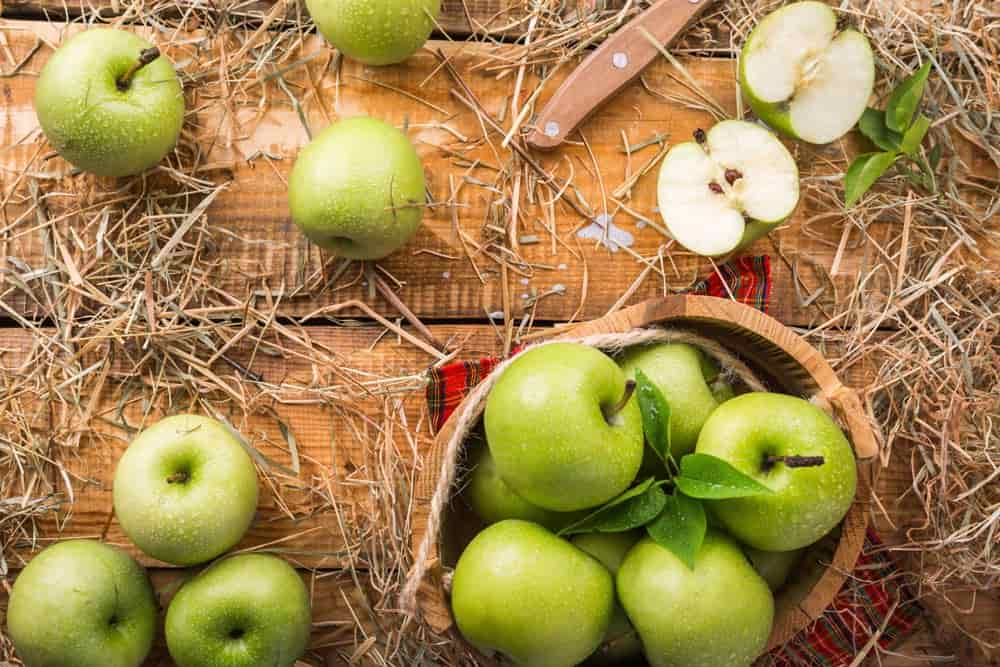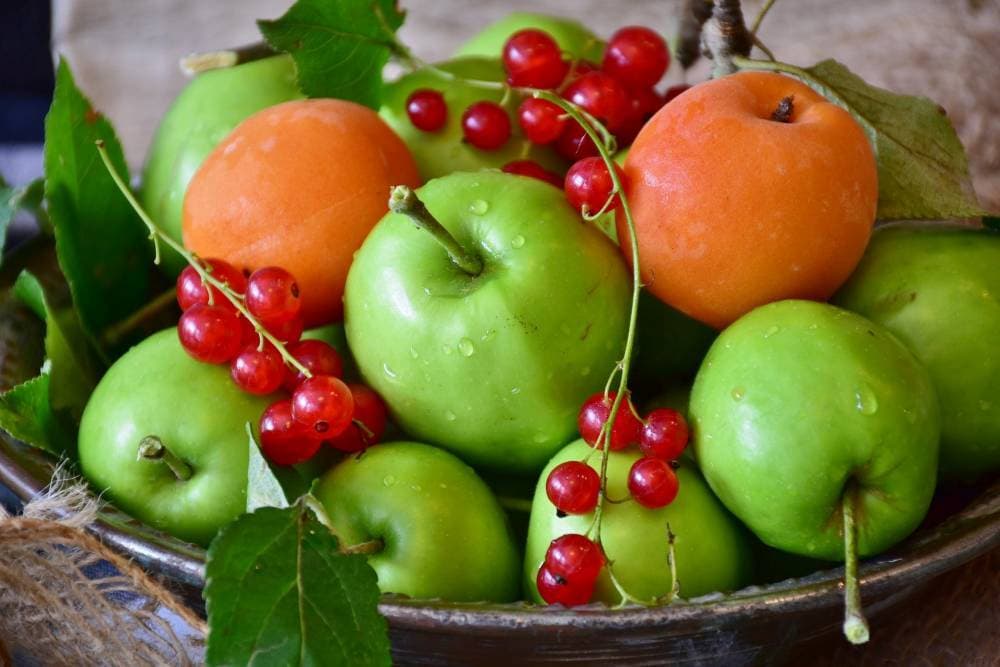The cheapest price for apple export
What you will read in this article....
global apple marketapple market demandapple fruit distributionapple market sizeu.s. apple marketorganic apple market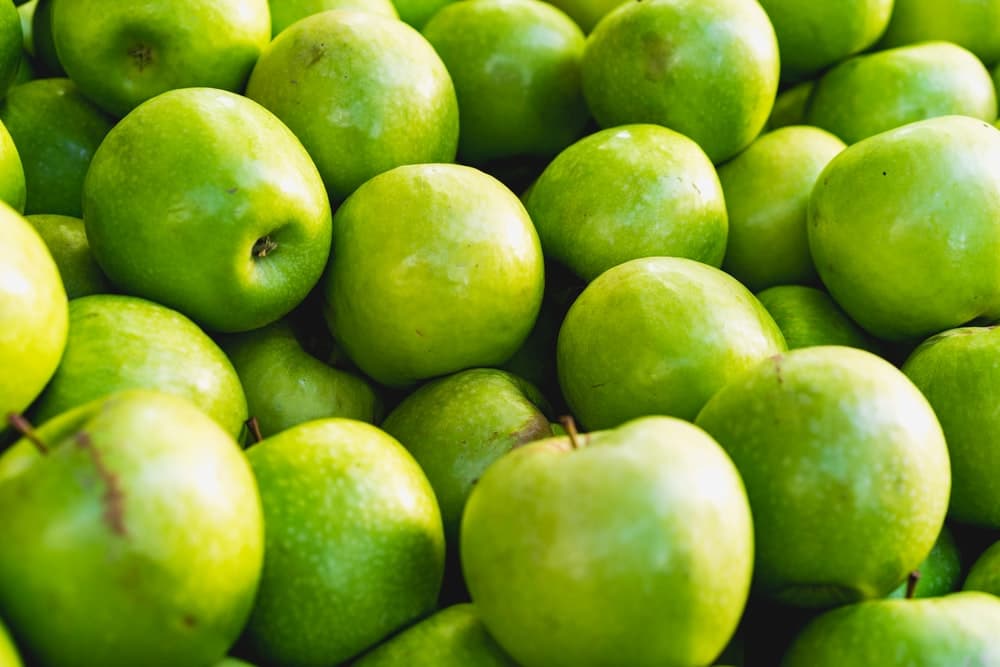
Apple is kind of high demand fruit global, so it means this market has great potential and size When it comes to the best fruits, the Southern Hemisphere is currently giving way to the Northern. The commercial transition should go without major problems. In most countries where the maragheh apple harvest has just begun, production has fallen. It is mainly caused by sunburn, spring frosts, hail, and thunderstorms. Most of the increase in volume is due to expansion. Prices have risen and remain high with new crops everywhere. One of the main factors driving the growth of the global apple market is the growing consumption of apples due to increased consumer awareness of their health.
People around the world are becoming more health conscious and are increasingly choosing healthy fruits and vegetables to support their overall health. In addition, the emergence of the COVID-19 pandemic has increased the demand for apples. People are learning about the benefits of this fruit, which in turn constantly increases the demand in the market. A medium-sized apple is about 3 inches in diameter, which is equivalent to 1.5 cups of fruit. This type of fruit is rich in fiber and water, helps to lose weight, and is good for the heart. Growing demand for organic apples from consumers in the US and Europe will drive market growth in the coming years. High-income populations in these areas are willing to pay extra for their health care. Organically grown apples make up about 7% of the total US apple production. All these factors will contribute to the growth of the apple industry in the coming years.
global apple market
in the global fruit market, the apple has the most demand, apple is an edible fruit obtained from the apple tree. Apple trees are cultivated and are considered the most common type of apple tree genus. They are popular fruits and contain antioxidants, vitamins, minerals, fiber, and other nutrients. Apples come in a variety of sizes, colors, and flavors. China is the largest consumer of fresh fuji apple in the world market, followed by the European Union, the United States, and other countries. China’s consumption of fresh apples is being driven by gradual income growth and health awareness, dietary changes, marketing innovations, and improved cold chain logistics. In addition, the development of e-commerce, fruit chain stores, and We-chat merchandising has made fruit consumption more accessible and convenient, increasing the value of consumption in China’s Tier 3 and Tier 4 cities. Since apples are a staple food, the apple market is not affected by declining incomes and economic downturns. However, apples are mostly consumed in the Horeka sector, which has been hit hard by the pandemic. Under these assumptions, the market could shrink significantly in the short term until 2020, but not catastrophically. market growth. Some risks also exist in the supply chain due to quarantine measures. While the workers are laid off, it’s time to treat the trees, followed by flowering; These periods are important for good garden management. This may affect the quality of the apples in the future or may require the additional use of insecticides to treat crop diseases. In addition, beekeepers in China, the largest producer, fear they will not be able to properly maintain their hives due to the lockdown. This, in turn, can seriously affect pollination by reducing the yield of fruits pollinated by bees; However, the impact of the problem is likely to be more localized and not systematically affect the entire market.
apple market demand
There is a growing demand for organic apples in the market among consumers around the world, fuelled by increased consumer interest in health and wellness. Compared to other traditionally grown fruits and apples, organic apples contain less sugar and more fiber. Consequently, this fruit is in high demand by consumers all over the world, especially in the US and Europe. High-income groups in these areas are also willing to pay extra to protect their health. As apple acreage and apple production in the United States have declined in recent years, consumer demand has created a booming organic apple sector. Organically grown apples currently make up about 7% of the total apple area in the United States. Although the yield of regular apples is generally higher than that of organic apples, organic apples have a price premium at every stage of the supply chain – on the farm, at wholesale, and retail. Despite a decline in overall red gala apples production over the past decade, demand for new varieties of apples and organic apples has skyrocketed in the US apple industry. The Asia-Pacific region leads the consumption of fresh apples with a 62% share of the global market. China is the largest producer of apples in the world. The apple is the most consumed fruit in China. With a consumption of 40 million tons or about 48% of the total, China remains the largest consumer of apples in the world. At the same time, apple consumption in China is 10 times higher than in the United States. China was the second consumer with a consumption of 4 million tons of apples. In 2019, per capita consumption in South Korea increased by 12% due to increased domestic supply and strong consumer preference for apples due to various health benefits compared to other national fruits.
apple fruit distribution
having information about the distribution channel of fruit is useful to decrease the cost for wholesalers. According to statistics, thirteen countries in the world have the largest production of apples, producing more than one million tons of apples per year. The top five countries are China, the United States, Iran, Turkey, and Poland. The countries mentioned were already in the lead in 2012, let’s see what changes in the new figures.
- China: $1.4 billion (19.8% of total apple exports)
- Italy: $962.3 million (13.2%)
- United States: $855.3 million (11.7%).
- New Zealand: $590.1 million (8.1%)
- Chile: $568.6 million (7.8%)
By distribution channels, the organic best apple market is segmented into supermarkets and hypermarkets, online stores, and others. In 2019, the supermarket and hypermarket segment led the organic apple market with the largest market share. Hypermarkets and supermarkets are self-service stores where goods are placed in different departments and on shelves to attract customers. These types of stores offer consumers a wide range of organic apple products viz. HOUR. Various varieties of organic apples are in one place at affordable prices compared to other distribution channels. This has led to increased sales of organic apple products in supermarkets and hypermarkets. The European organic apple market is divided between Germany, France, Italy, Great Britain, Russia, and the rest of Europe. In 2019, the Rest of Europe segment held the largest share of the European organic apple market, followed by Italy and France. The growth of the market is associated with an increase in the production and consumption of organic apples in these countries. A growing awareness of the harmful effects of the use of chemicals and pesticides on agricultural production and the growing importance of sustainability have led farmers and consumers to opt for organic fruit varieties, especially apples. biological. 
apple market size
before starting the apple fruit business, it is mesentery to collect information about the size of the market and trends. The global fresh apple and rose apple market has a growth potential of 3.42 million tonnes during 2020-2024 and the growth rate of the market is expected to accelerate during the forecast period due to the steady increase in annual growth. The fresh apple market is fragmented and the degree of fragmentation is expected to increase during the forecast period. The main players in the market are Auville Fruit Company. Inc., Borton & Sons, and Evans Fruit Company. While rapid growth offers huge opportunities for growth, heavy weather risks will hinder the growth of the market players. In order to increase their share in the fresh apple market, companies are expected to focus more on growth potential in high-growth regions while maintaining their position in slow-growing regions. To help clients improve their market positioning, this Fresh Apples Market Outlook report provides a detailed analysis of the market leaders and insights into the skills and capabilities of these companies. The report also provides detailed information about the competitive landscape of the market and the products offered by various companies. In addition to this, this latest Apple market analysis report also provides information about the upcoming trends and issues that will affect the growth of the market. This will help companies develop strategies to maximize future growth opportunities. This report provides information on the production, sustainability, and outlook of several major fresh apple companies, including:
- Auville Fruit Company Inc.
- Borton & Sons
- Evans Fruit Company
- hill garden
- Gerber Farm
- Gilbert Orchards
- Precious Apples Ltd.
- OOO “Stemtilt” Breeders
- Sims Fruit Ranch Inc.
- Washington Fruit and Produce Company
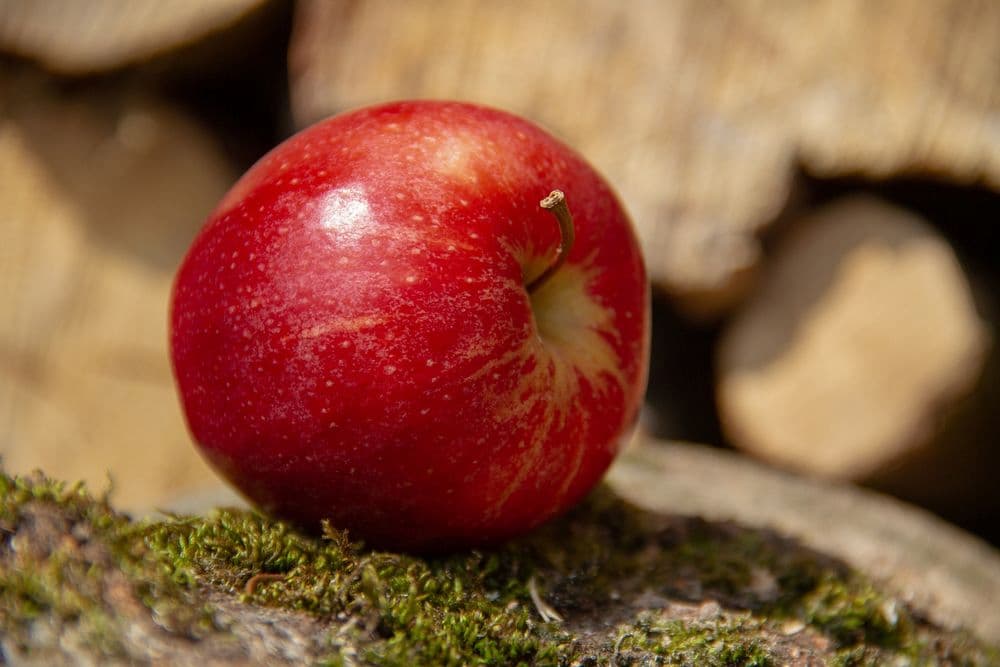
u.s. apple market
The apple is the most consumed fruit in America, followed by oranges. In 2019, the average per capita consumption of all types of apples in the United States increased to about 26.3 pounds. Per capita consumption of apple juice and cider fell to 12.6 pounds. In 2019, fresh market apple fruit consumption was £10 (ERS, 2021). Factors driving the increase in consumption of apples and apple products include new varieties, rising incomes, expanding production in the United States, a growing and more diverse population, foods better suited to consumer lifestyles, and the need to include fruit in the diet. Includes greater awareness of need. , Balanced diet. The United States is the second largest apple producer in the world after China. The United States is followed by Poland, Italy, and France. About 200 different types of apples are grown in the United States. The top 10 varieties in the United States include Red Delicious, Gala, Granny Smith, Fuji, Golden Delicious, Honey Crisp, Macintosh, Rome, Crips, Pink/Pink Lady, and Empire (Apple Apple Association, 2021). There are over 5,000 apple growers in the United States, with an average of 240 million bushels of apples per year. These growers grow apples on approximately 800,000 acres (US Apple Association, 2021). About one in three apples grown in the United States is exported. The most important export markets in 2014/2015 were Mexico, Canada, India, Taiwan, United Arab Emirates, Hong Kong, Vietnam, Indonesia, Saudi Arabia, and Thailand (US Apple Association, 2021). The United States imports fresh apples at the end of the season or before the fall harvest to make up for production shortfalls. Many of these apples are imported from the southern hemisphere. Only 5% of apples consumed in the United States are imported (US Apple Association, 2021). 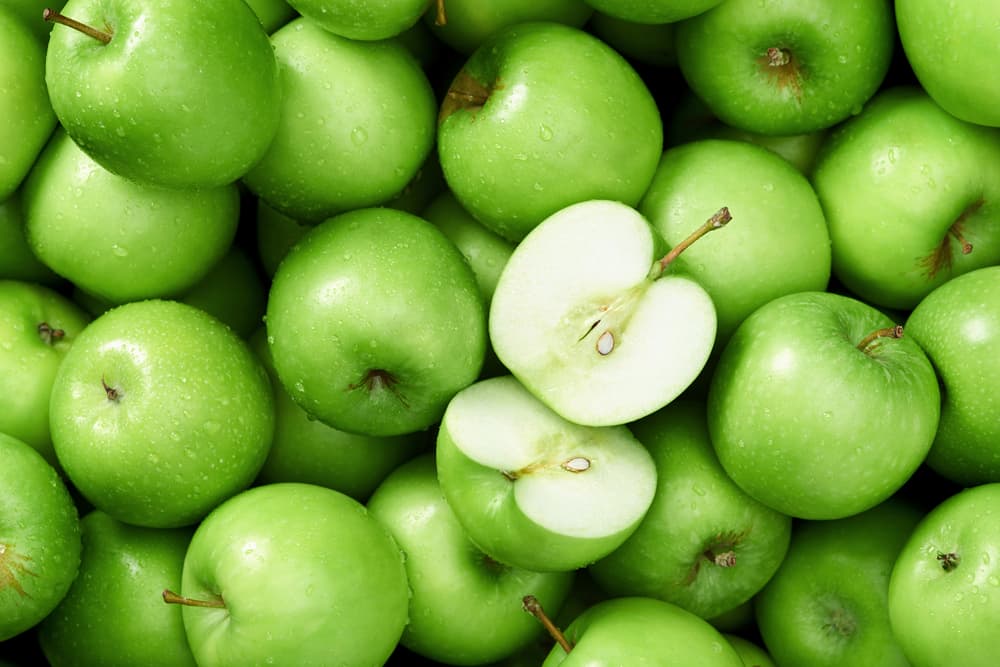
organic apple market
there are many differences between ordinary apple and organic one in the market in terms of price, taste, etc. Apples are an incredibly healthy food to add to your weekly basket, but which one should you choose? Organic apples or regular apples? And does it really matter? Why Choose Organic Apples?
- Pesticides are poisonous. The sole purpose of any pesticide is to destroy living organisms. According to the EWG, the US government and international government groups have presented data showing a direct link to pesticides.
- Spraying insecticides are harmful to agricultural workers. We don’t often think about the work environment of the people who collect our food, but it’s worth thinking about.
- Organic apples taste better. There is an incredible difference in taste between organic apples and apples from conventional farming.
Whether red, pink, or green, apples are popular across all income groups, age groups, and ethnic groups. In Organic Fresh Trends 2021, over a quarter of apple shoppers said they choose organic fruit at least occasionally, and one in 10 said they always choose organic apples. With an average selling price of $2.11 a pound, organic apples account for more than 12% of total apple sales, up from £229.5 million in 2019, according to IRI.  Fresh Trends poll, three times that of people over 50. Black shoppers were twice as likely to always buy organic apples and pineapple as Hispanics, Asians, or other ethnic shoppers. In fact, black buyers were the second most likely group overall (after 18-29-year-olds).
Fresh Trends poll, three times that of people over 50. Black shoppers were twice as likely to always buy organic apples and pineapple as Hispanics, Asians, or other ethnic shoppers. In fact, black buyers were the second most likely group overall (after 18-29-year-olds).

